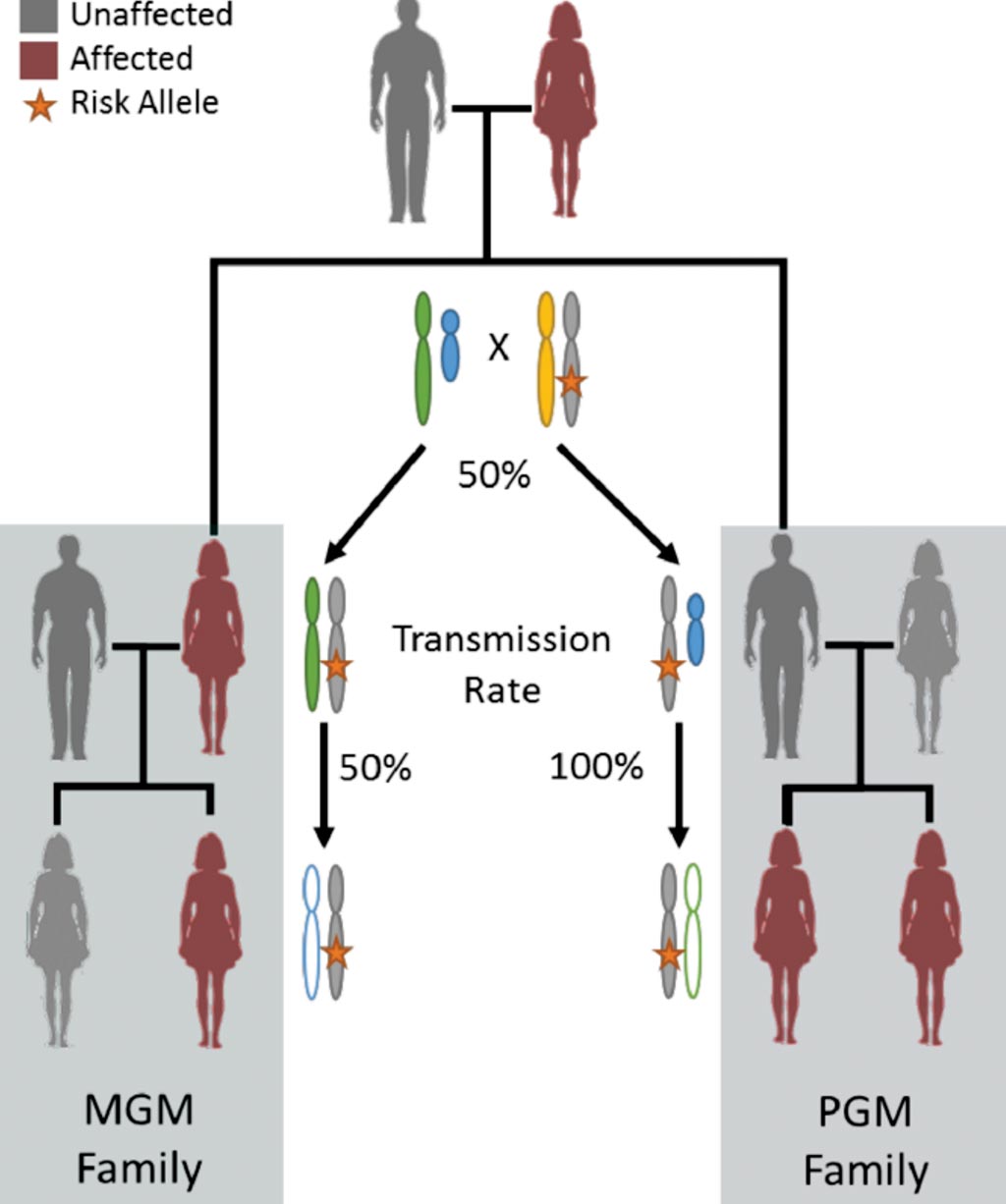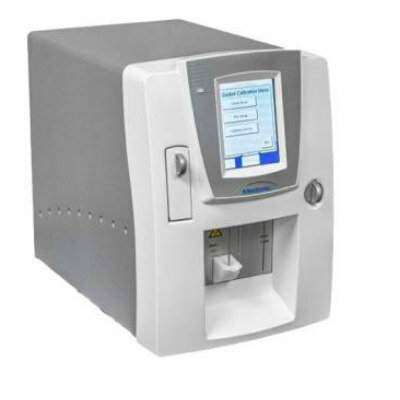Ovarian Cancer Risk May Be Paternally Inherited
By LabMedica International staff writers
Posted on 01 Mar 2018
A history of ovarian cancer among first-order relatives remains the strongest and best-characterized predictor of ovarian cancer risk and a main determinant of genetic testing referral.Posted on 01 Mar 2018
The evidence for a monogenic, autosomal dominant mode of inherited risk dates to the pre- breast cancer 1, early onset gene (BRCA) era where studies focused on assessing heritability using affected first-order and second-order female relatives.

Image: Diagrams for X-linked inheritance when cancer status is specific to women (all carrier men are effectively disease censored). Two family patterns with a pair of first-degree affected women are the maternal grandmother (MGM) family and the paternal grandmother (PGM) family (Photo courtesy of Roswell Park Cancer Institute).
Scientists at Roswell Park Cancer Institute (Buffalo, NY, USA) and their colleagues first identified 3,499 grandmother-granddaughter pairs from a familial ovarian cancer registry that encompassed information on more than 50,000 individuals from 2,600 families collected over several decades. They whittled this set down to the 892 pairs, providing clues to ovarian cancer risk transmission, which included 157 granddaughters with ovarian cancer.
In an effort to tease out the basis of this X-linked inheritance, the scientists did exome sequencing on 159 BRCA1/2 mutation-negative women from the registry, focusing on germline X chromosome and BRCA1 coding sequences. The group included 49 ovarian cancer-affected women with affected mothers, 46 cases who had an affected sister and unaffected mother, and seven ovarian cancer-affected women with an affected sister and mother.
The team found that overlapping ovarian cancer diagnoses were more common in the paternal grandmother-granddaughter pairs, where the cancer rate was more than 28% than in the pairs involving maternal grandmothers and their granddaughters. The latter pairs had an ovarian cancer rate just shy of 14%. The presence of ovarian cancer in a paternal grandmother, but not a maternal grandmother, coincided with earlier age of onset in affected granddaughters. They tracked down a missense mutation in the MAGE Family Member C3 (MAGEC3), a gene previously put forward as a potential X-linked tumor suppressor. The variant was in linkage disequilibrium with other nearby variants, suggesting there might be an alternative causal variant or a related haploblock in the X chromosome region identified.
The authors concluded that they had demonstrated that a genetic locus on the X-chromosome contributes to ovarian cancer risk. An X-linked pattern of inheritance has implications for genetic risk stratification. Women with an affected paternal grandmother and sisters of affected women are at increased risk for ovarian cancer.
Kevin H. Eng, PhD, an assistant professor of oncology and the lead author said. “Our study may explain why we find families with multiple affected daughters: because a dad's chromosomes determine the sex of his children, all of his daughters have to carry the same X-chromosome genes.” The study was published on February 15, 2018, in the journal PLOS Genetics.
Related Links:
Roswell Park Cancer Institute












